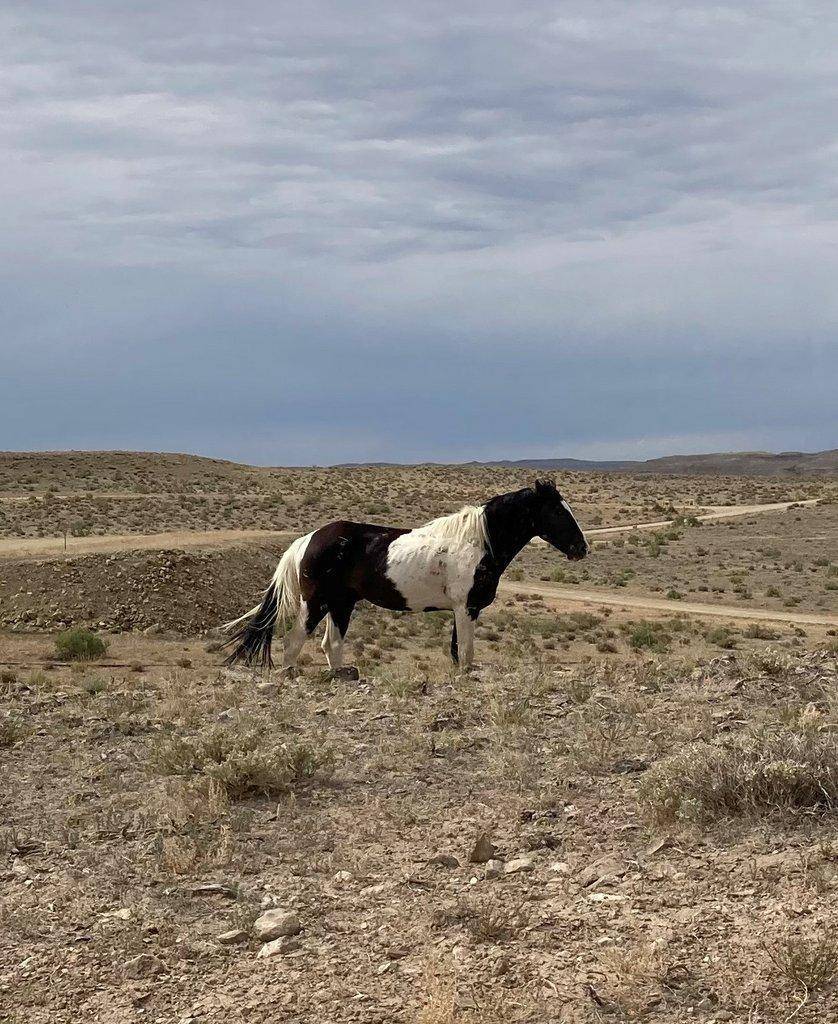By Julene Reese and Shelby Ruud
Without active management to reduce on-range wild horse and burro growth rates, populations could exceed 160,000 within four years, according to Terry Messmer, Utah State University Extension wildlife specialist.
“In areas where herd sizes exceed the range-carrying capacity, wild horses and burros are at increased risk of death from dehydration, starvation and vehicle collisions,” he said. “And when there is an overabundance of free-roaming wild horses and burros, there are also impacts to the overall health of the U.S. western public rangelands.”
Messmer said the use of helicopters to gather free-roaming horses and burros is an effective way to remove animals in areas where herds are above desired management levels, and the practice is relatively safe.
Recent reports involving injuries of individual wild horses during helicopter gathers have brought the practice into question, but a study published in 2020 by the Journal of Equine Veterinary Science reported that helicopter gathers are reasonably safe and humane. The study reviewed 10 years of data from 70 gathers between 2010-2019 in nine Western states. The number of animal deaths related to the helicopter roundups was similar to bait trapping, another method used to gather smaller numbers of wild horses into a temporary corral baited with hay.
The mortality rates were 1.7 percent for bait-trap gathers and 1 percent for helicopter gathers. Most of the deaths related to the wild horse and burro roundups were related to pre-existing or chronic conditions, such as poorly healed injuries, lameness or blindness. The number of mortalities were far fewer than the deaths reported for similar roundups of elk, deer and caribou, which have reported mortality rates of up to 20 percent.
The Bureau of Land Management (BLM) manages wild horses and burros in 177 herd management areas across 10 western states. As of March 1, 2020, they estimated there were 95,114 free-roaming wild horses and burros occupying BLM-administered herd management areas. This is more than three times the established ecological balance level for appropriate management.
“Unmanaged herds can degrade arid ecosystem functions, resulting in reduced forage, cover, and water available for domestic livestock and imperiled native wildlife species, such as the greater sage-grouse,” Messmer said.
The Bureau of Land Management has committed to removing over 20,000 wild horses and burros from drought-stricken Western ranges in order to reduce the risk of starvation, thirst and habitat destruction. If achieved, this would be the largest number of animals ever gathered and removed in one year. The BLM reviews and adjusts plans for managing wild horses and burros annually to best protect the health of the animals as well as the health of the public lands.
“The BLM is committed to the safety of the wild horses and burros entrusted to our care,” said BLM Director Tracy Stone-Manning. “Our gather efforts, handling standards and fertility control work are guided by our compassion for these animals and our desire to protect their well-being, as well as the health of our public lands.”
The BLM continues to implement a variety of management tools, including gathers to reduce overpopulation, fertility control to slow future growth and adoptions to place excess animals into good homes. The agency made significant progress last year toward its goals, including placing more than 8,600 animals into private care through adoptions and sales – the largest number in 24 years. The BLM has measures in place to ensure that adopted animals go to good homes and reforms to strengthen protections for animals placed into private care are planned in the coming months.
“Although injuries to wild horses and burros during gathers are cause for concern and reflection, the consequences of not conducting the gathers will be more catastrophic for all, the herds included, than the loss of one animal,” Messmer said.
More information about free roaming herds and healthy rangeland ecosystems can be found at extension.usu.edu/freesnetwork.

